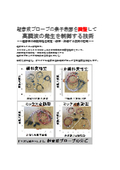Control technology for nonlinear ultrasonic sweep oscillation based on the classification of ultrasonic propagation phenomena.
Dynamic control technology of ultrasound through sweeping oscillation of multiple ultrasonic probes.
The Ultrasonic System Research Institute has developed a classification method for the phenomenon of ultrasonic vibrations propagation through the measurement and analysis of ultrasonic propagation states. Based on this classification, we have developed a nonlinear sweep oscillation control technology for ultrasound using a nonlinear resonant ultrasonic oscillation probe. This ultrasonic sweep oscillation control technology dynamically controls the linear and nonlinear resonance effects according to the main frequency (power spectrum) related to the propagation state of the ultrasound, based on the dynamic characteristics (changes in nonlinear phenomena). From previous experiments and data measurement analyses, we have been able to classify effective utilization methods into the following four recommended controls: 1. Two types of sweep oscillation control (linear type) 2. Three types of sweep oscillation control (nonlinear type) 3. Four types of sweep oscillation control (mixed type) 4. Dynamic control (variable type) based on the combinations above. Furthermore, the variable type can be classified into the following three control types based on the sweep oscillation conditions: 1. Linear variable control type 2. Nonlinear variable control type 3. Mixed variable control type (dynamic variable type)
Inquire About This Product
basic information
The essential idea of this control is to adapt the analysis results of ultrasonic sound pressure data (bispectrum) to the "derived functor" of abstract algebra. Although abstract, in measuring and analyzing the propagation state of ultrasound, we aimed to capture the changing states over time related to nonlinear phenomena (bispectrum) through corresponding control cases. We considered the relationship between "derived functors" and spectral sequences in the context of the propagation space of ultrasound, corresponding to linear and nonlinear resonance effects as a complex change. By examining the boundary parts of this complex change, we devised a method to relate nonlinear resonance phenomena (generation of harmonics) to higher-order cohomology, which was realized as a control setting (know-how). This is very important for combining multiple sweep oscillations. As a result, the "nonlinear control technology using multiple sweep oscillations" developed by the Ultrasonic System Research Institute has been realized as a concrete technology (e.g., ultrasonic control systems). (Details and know-how will be explained through consulting.) If you are interested, please contact us via email.
Price information
Please feel free to contact us.
Delivery Time
※Please feel free to contact us.
Applications/Examples of results
Regarding cleaning, it is difficult to obtain information about the characteristics and variations of dirt. By conducting experimental verification based on such classifications, effective ultrasonic control can be achieved. Other application examples include evaluation of ultrasonic cleaners, evaluation of ultrasonic transducers, ultrasonic processing, welding, bending, control of vibration phenomena, promotion and suppression of chemical reactions using ultrasound (e.g., plating) treatment, surface inspection and treatment based on the characteristics of ultrasonic vibrations propagating on surfaces, ultrasonic treatment (stirring, emulsification, dispersion, grinding, etc.) for liquids, gases, and elastic bodies (powders, etc.), and more. In July 2021, we began supporting acoustic property testing using ultrasound. In September 2021, we developed ultrasonic propagation control technology by sweeping multiple ultrasonic frequencies. In January 2024, we developed technology to measure, analyze, and evaluate the interactions of ultrasonic vibrations. In April 2024, we developed optimization technology for resonance phenomena and nonlinear phenomena. In May 2024, we developed optimization technology related to the combination of sound and ultrasound. In June 2024, we developed optimization and evaluation technology concerning water tanks, ultrasound, and liquid circulation. In July 2024, we developed an ultrasonic probe using components plated with iron on polyimide film.
Detailed information
-

Control technology for nonlinear ultrasonic sweep oscillation based on the classification of ultrasonic propagation phenomena.
-

Control technology for nonlinear ultrasonic sweep oscillation based on the classification of ultrasonic propagation phenomena.
-

Control technology for nonlinear ultrasonic sweep oscillation based on the classification of ultrasonic propagation phenomena.
-

Control technology for nonlinear ultrasonic sweep oscillation based on the classification of ultrasonic propagation phenomena.
-

Control technology for nonlinear ultrasonic sweep oscillation based on the classification of ultrasonic propagation phenomena.
-

Control technology for nonlinear ultrasonic sweep oscillation based on the classification of ultrasonic propagation phenomena.
-

Control technology for nonlinear ultrasonic sweep oscillation based on the classification of ultrasonic propagation phenomena.
-

Control technology for nonlinear ultrasonic sweep oscillation based on the classification of ultrasonic propagation phenomena.
-

Nonlinear Oscillation Control Technology of Ultrasonics
catalog(27)
Download All Catalogs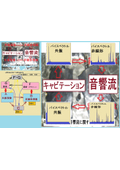


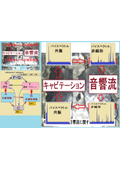

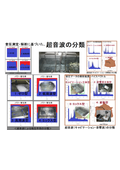




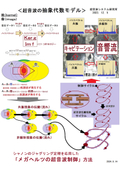
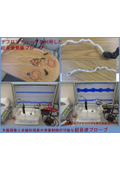


News about this product(37)
Company information
The Ultrasonic System Research Institute conducts the following activities with its original product: ultrasonic systems (sound pressure measurement analysis, oscillation control): 1) Manufacturing and sales of ultrasonic systems (sound pressure measurement analysis, oscillation control) 2) Consulting services for various equipment (Note): cleaning machines, stirring devices, processing equipment, machine tools, plating devices, welding devices, etc. Ultrasonic System (Sound Pressure Measurement Analysis, Oscillation Control) We manufacture and sell a system that combines the "Ultrasonic Tester NA (recommended type)" for easy measurement and analysis of ultrasonic waves and the "Ultrasonic Oscillation System (1 MHz, 20 MHz)" for easy oscillation control. <Patent Applications Filed> Patent Application No. 2021-125866: Ultrasonic Control (Ultrasonic Oscillation Control Probe) Patent Application No. 2021-159990: Ultrasonic Welding Patent Application No. 2021-161532: Ultrasonic Plating Patent Application No. 2021-171909: Ultrasonic Processing Patent Application No. 2021-175568: Flow-type Ultrasonic Cleaning Some of the manufacturing technology for the ultrasonic oscillation control probe is described in Patent Application No. 2021-125866. Patent Application No. 2023-195514: Ultrasonic Plating Using Megahertz Ultrasonic Waves and Fine Bubbles.













